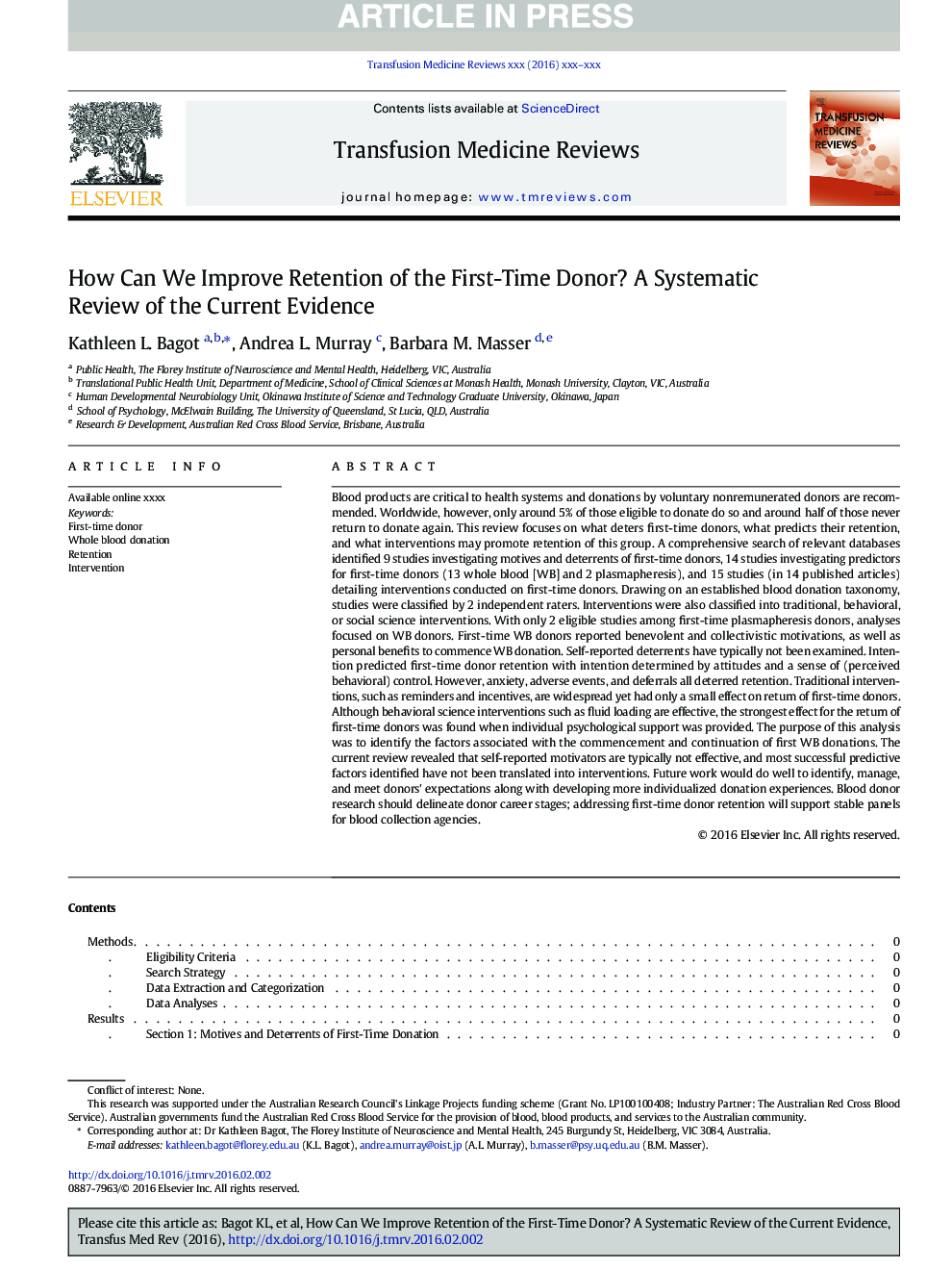| Article ID | Journal | Published Year | Pages | File Type |
|---|---|---|---|---|
| 6114327 | Transfusion Medicine Reviews | 2016 | 11 Pages |
Abstract
Blood products are critical to health systems and donations by voluntary nonremunerated donors are recommended. Worldwide, however, only around 5% of those eligible to donate do so and around half of those never return to donate again. This review focuses on what deters first-time donors, what predicts their retention, and what interventions may promote retention of this group. A comprehensive search of relevant databases identified 9 studies investigating motives and deterrents of first-time donors, 14 studies investigating predictors for first-time donors (13 whole blood [WB] and 2 plasmapheresis), and 15 studies (in 14 published articles) detailing interventions conducted on first-time donors. Drawing on an established blood donation taxonomy, studies were classified by 2 independent raters. Interventions were also classified into traditional, behavioral, or social science interventions. With only 2 eligible studies among first-time plasmapheresis donors, analyses focused on WB donors. First-time WB donors reported benevolent and collectivistic motivations, as well as personal benefits to commence WB donation. Self-reported deterrents have typically not been examined. Intention predicted first-time donor retention with intention determined by attitudes and a sense of (perceived behavioral) control. However, anxiety, adverse events, and deferrals all deterred retention. Traditional interventions, such as reminders and incentives, are widespread yet had only a small effect on return of first-time donors. Although behavioral science interventions such as fluid loading are effective, the strongest effect for the return of first-time donors was found when individual psychological support was provided. The purpose of this analysis was to identify the factors associated with the commencement and continuation of first WB donations. The current review revealed that self-reported motivators are typically not effective, and most successful predictive factors identified have not been translated into interventions. Future work would do well to identify, manage, and meet donors' expectations along with developing more individualized donation experiences. Blood donor research should delineate donor career stages; addressing first-time donor retention will support stable panels for blood collection agencies.
Keywords
Related Topics
Health Sciences
Medicine and Dentistry
Hematology
Authors
Kathleen L. Bagot, Andrea L. Murray, Barbara M. Masser,
